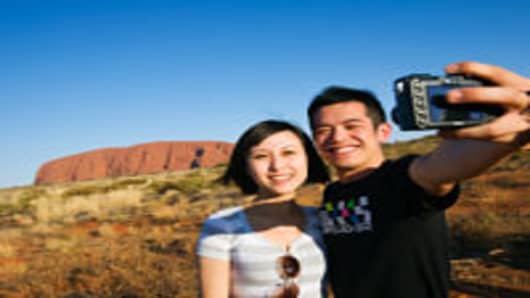Like many small tourism businesses across Australia, Jet Ski Safaris on Queensland’s Gold Coast has a problem – it’s not set up to deal with wealthy Chinese visitors.
“All our safety and instruction demos are in English,” explains the owner, who declines to give her name. “We can only send people out if they understand the briefings.” In order to get around this issue Jet Ski Safaris is considering pairing Chinese visitors with an instructor, but given staffing constraints that is a limited solution.
Official figures released on Friday underlined the growing importance of Chinese visitors to Australia’s A$34 billion-a-year tourism industry, which can no longer rely on its traditional markets for growth.
The number of tourist visitor arrivals from China in May hit 50,000, an increase of 17 percent on the same month a year earlier, according to the Australian Bureau of Statistics. In contrast, arrivals from the UK rose just 0.4 percent to 48,800.
So while much has been made of the fact that the fortunes of Australia’s fast-growing resources sector rests on the performance of China and its seemingly insatiable appetite for commodities such as iron ore and coal, it is equally true that the fortunes of its tourism industry also rest on Chinese consumers.
If the trend continues Chinese tourist arrivals will pass 600,000 this year, up from 542,000 in 2010 and 158,000 a decade ago, and soon overtake British arrivals (608,000 last year). “It’s not that people have stopped coming to Australia, the problem is they are coming from China and south-east Asia,” explains Felicia Mariani, managing director of the Australian Tourism Export Council. “And we have not geared up to manage this shift as quickly as it’s happened.”
Last year, short-term visitor arrivals in Australia were flat at 5.9m, as an increase in tourists from China, New Zealand and Malaysia offset a decline in visitors from Japan and Europe. Close to one in four holidaymakers now come from China and south-east Asia.
Deloitte Access Economics estimates Chinese tourists, who accounted for 2.4 percent of all visitors to Australia in 2004, will make up 13.3 percent of the market by 2014. It also says Chinese visitors stay longer and spend more – A$109 a night against $88 a night for other tourists.
Official Chinese statistics show that visits to Australia accounted for just 2 per cent of all trips by Chinese tourists in the first quarter of 2012, suggesting that there is room to expand the market.
It is partly for that reason that Tourism Australia launched the latest version of its global advertising campaign, “There’s Nothing Like Australian”, in China, and is reportedly seeking an alliance with China Eastern, the country’s second biggest carrier.
The increase in Chinese visitor arrivals has helped the industry offset not only a decline in visitors from western Europe but also domestic holiday makers, who are taking advantage of a strong domestic currency to jet off to places like Bali and Thailand in increasing numbers. Based on May’s arrivals and departures data from the ABS, a record 8 million Australians – almost a third of the population – will holiday overseas this year, up from 7.8 million in 2011.
“Because of the strength of the economy, Australians are getting marketed to really hard by destinations in south-east Asia and the Pacific and also the US,” says Rowan Barker, a spokesperson for the Tourism and Transport Forum, an industry body.
“There’s a lot of value to be had in Indonesia and Thailand even when the dollar is not strong. But at the moment the buying power is just incredible,” he added.
The question facing the Australian tourism industry is how it deals with these powerful structural changes.
The gaming lobby, led by James Packer, the billionaire chairman of casino group Crown Ltd, believe the best way to attract more Chinese and Asian visitors is to build massive hotel and gaming complexes. Indeed, Mr Packer is seeking permissions to build a six star hotel and luxury casino close to the Sydney Harbour Bridge.
But others like Ms Mariani are not so sure. They believe the real challenge is to improve language skills and make it easier for Chinese visitors to visit regional and more remote parts of Australia.
“While Chinese visitors want good shopping, nightlife and entertainment, the reality is that can get all of that at home and in places like Macau. We have to be able to offer more than that,” says Ms Mariani. “Let’s not go head to head with the things China already does well.”


